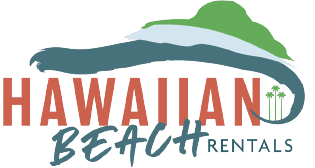When I first planned my trip to the Hawaiian Islands by getting the very best Oahu Vacation Information I made arrangements for a wonderful trip, though at the time I really wasn’t so much interested in surfing. Then when I began to travel around Oahu I began to see surfers everywhere! I saw surfboards on top of cars, in trucks, and people are carrying them as they walk toward the beach.
This made me think about how surfing got started in the first place and I really began to wonder about the history of surfing in the Hawaiian Islands. Of course it does seem inevitable that the seafaring Polynesians who were so skilled in all aspects of living near and sailing over the ocean would be among the first people to surf the ocean waves. Today the Hawaiian Islands are a mecca for surfers who come from all over the world to test themselves on Hawaii’s large and challenging waves.
Increasingly popular in the Hawaiian Islands today, along with traditional surfing, are more modern water sports including tow-in surfing (using powered craft to pull a surfer into a giant wave), and kitesurfing (the surfer is pulled by a large parachute-like kite)
Surfing waves on a surfboard was likely first done in the Society Islands, including Tahiti. It was later in the Hawaiian Islands, however, that surfing really took hold. The Hawaiian term for surfing is hee nalu (“to ride the waves”).
Hawaiians surfed waves on surfboards hundreds of years ago. They also left petroglyphs of surfers carved into lava rocks, and there are stories of surfing in Hawaiian chants dated to at least 500 years ago (which means Hawaiians were probably surfing long before that).
Surfing in the Hawaiian Islands was part of the Hawaiians’ kapu system, where alii (the ruling class, or royalty) and makaāinana (commoners) had different status.
The alii, or ruling class, used surfboards that were from 14 to 16 feet long. The boards were carved from the buoyant wood of the wiliwili tree (Hawaiian coral tree). A big surfboard like this made of premium wood was called an olo (also owili, paha), and might weigh as much as 175 pounds. An onini was a board used only by the best surfers.
Commoners used a 10- to 12-foot board called an alaia (also called an omo), made from the denser, heavier and thus less buoyant wood of koa or the wood of the ulu (breadfruit), which was also less buoyant. A small board was known as a kioe.
Constructing a Surfboard
To make a surfboard, the craftsman first put a ceremonial fish (kūmū) in a hole near the tree’s roots and then completed a ritual showing respect. The tree was cut down, and a bone, or a stone adze was used to shape the board.
oahi (rough stone) or pohaku puna (granulated coral) was used to put a smooth finish on the board, smoothing out the marks from the adze.
For a final coat on the surfboard, the root of ki (ti), pounded bark (hili) of kukui (candlenut), or stain from the buds of maia (banana) was used. A dark stain color was also achieved by rubbing the soot from burned kukui nuts into the wood. Kukui oil was used to give the board a glossy finish.
The papa hee nalu (surfboard) was dedicated before taking it in the ocean. Then after each surf session the board was treated with the oil of niu (coconut), and wrapped in kapa (tapa) barkcloth.
As I site here now in my luxurious Oahu Condo I am resting after a wonderfully long day of surfing on the beautiful ocean waves, perhaps one of the most fun and wonderful days of my life!
